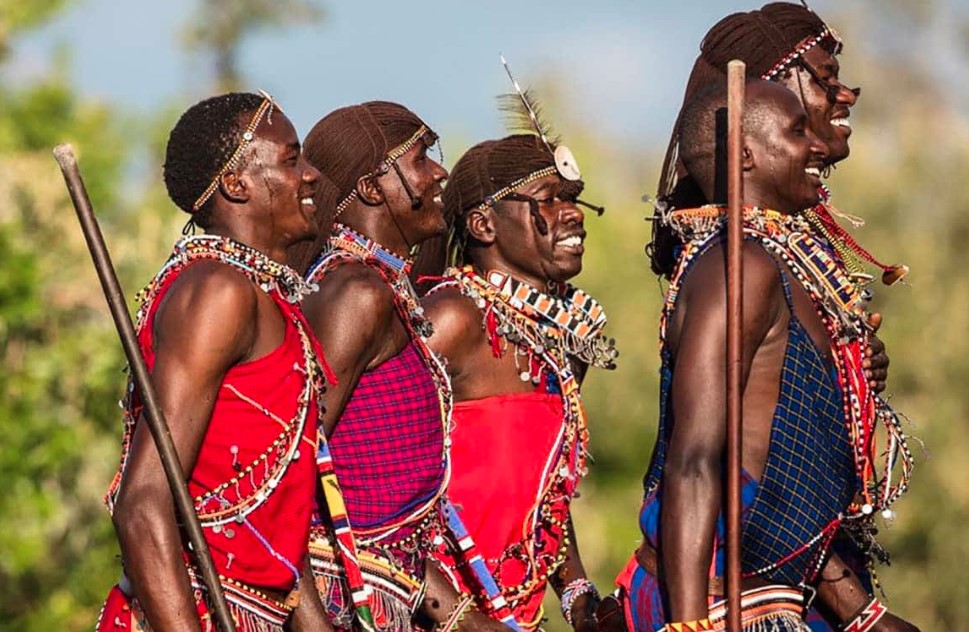Introduction
This is the journey of the history and origin of the Maasai tribe.
The Maasai name (which means those who speak the language “Maa”) is often misspelled, and they are referred to as “Masai”. This name comes from the incorrect spelling used by British settlers and is still used today and Maasai means people speaking Maa. In some theory, like the Falasha of western Ethiopia said, the Maasai are Jewish: a long-lost tribe of Israel. Maasai are traditionalists and have resisted the urging of the Kenyan and Tanzanian governments to adopt a more modern lifestyle for them.
The ancestors of modern Maasai, a Nilotic people, have a history rooted in a southward migration from the Nile Valley lived in the region of Africa that is now known as Sudan and Ethiopia. In pursuit of better agricultural and grazing lands which they are known for, began to migrate (along with other tribes of the region) southward in the 15th century and they eventually arrived central East Africa by 1750 CE. These tribes spent time in the Kenyan highlands and the Lake Turkana region before ultimately landing in southern Kenya. The origins of Maa (Maasai) have been traced to the east of present-day Juba in South Sudan.
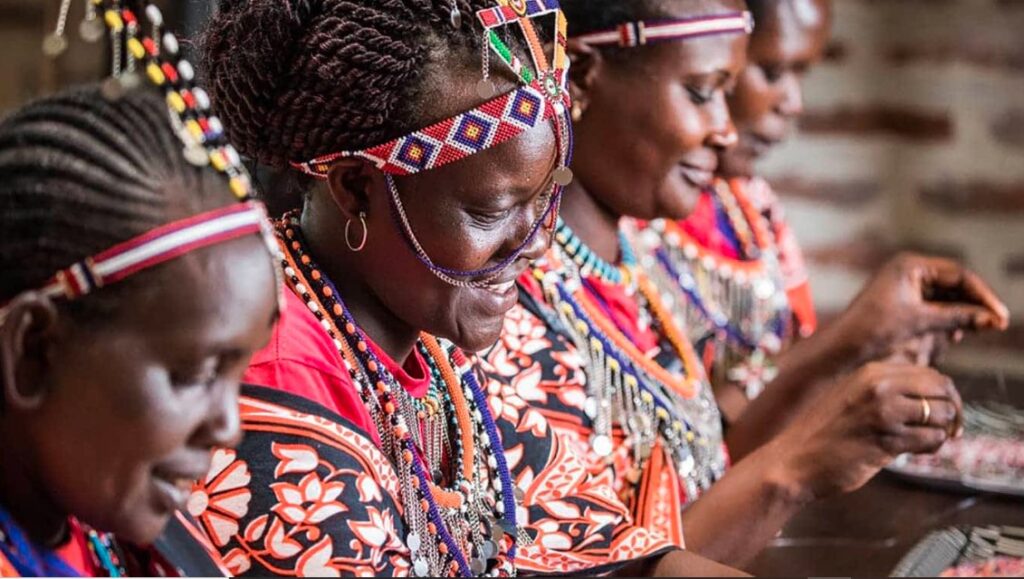
Towards the end of the twentieth century, they were the dominant tribe in Kenya. Despite the fact that the British were able to defeat the Maasai, they were utterly impressed by their fighting spirit and courage. The Maasai were forced to leave Kenya’s most fertile lands and in turn were left with some of the destitute parts of the country to life off.
Currently now, the entire Maasai population is estimated to be approximately 900,000 inhabitants. They speak the Maa language, but also speak the official languages of Kenya – Swahili and English.
This is how the traditional Maasai homes were traditionally built in a very non-permanent and on the go manner because of the way they moving around with their heard. Their enclosure, consisting of a large circular thornbush fence around a ring of mud-dung houses, holds four to eight families and their herds. There’s possibility that they might leave to another place better feeding of their heard. Women of the tribe also built homes and did so in either a circle or loaf shape. The men of the village then built a large circular fence around the homes to defend their village.
The Maasai tribe keep spreading to north of Lake Turkana in the lower Nile Valley. Later on, they continued their journey to south and settled in the Great Rift Valley and the Dodoma and Mount Marsabit region. They were feared for raiding cattle as far east as the Tanga Coast in Tanzania. Therefore, the Maasai people are primarily found in these countries Kenya and Tanzania, especially northern Tanzania specifically in the areas bordering the Great Rift Valley.
This tribe is renowned for its remarkable trackers with generations of knowledge of their lands and its wildlife. With semi-nomadic lifestyle and predominantly pastoralists, they still live by herding cattle and goats. Where other Kenyan tribes have adjusted to modern-day living and sacrificed their lands and their livelihood, the Masai still stay true to their old traditions.
The Maasai people are among the 50 tribes of native people living in East Africa, in the regions of southern Kenya and northern Tanzania. They are fully nomadic, wandering in bands throughout the year and surviving almost entirely on the meat, blood, and milk of their herds.
Maasai Food
Typical Maasai traditional foods consist of these: meat, blood-milk mixtures, fat, milk, honey, and tree bark. And Maasai warriors believed to have two meal a day. But Maasai prohibited food especially men must not eat meat that has been in contact with women or that has been handled by an uncircumcised boy after it has been cooked. This is a taboo in Maasai.
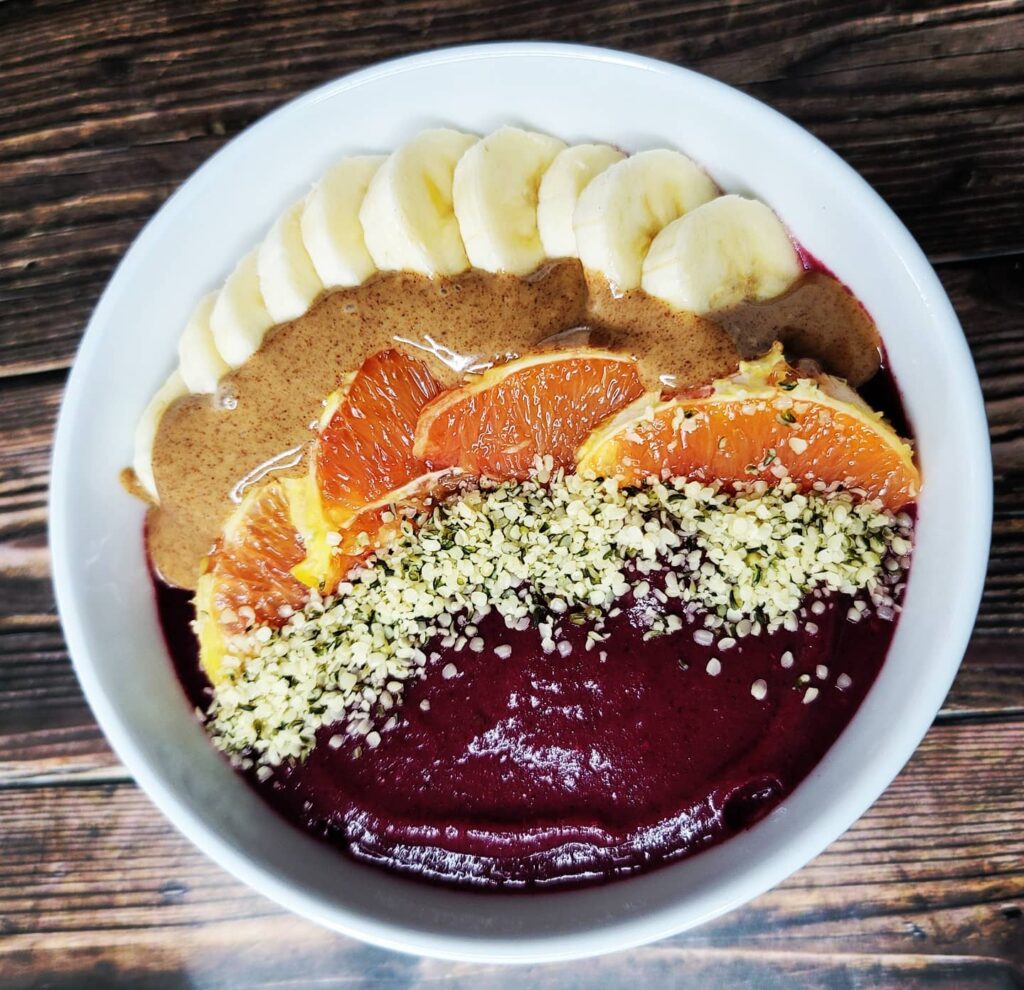
In addition to their diet, the Maasai people have supplemented their diet with farm produced such as maize meal, rice, cabbage among other food crops. Rather than depending only on their animals for food alone.
Clothing
Maasai clothing varies by sex, age and sometimes place. Young men wear black for several months after their circumcision. Although, red is a favored color among the Maasai. They wear red and blue color as it is known to be sacred and holy in the Maasai culture. Red – stands for bravery, unity, and blood, while blue represents energy and the sky. A Maasai bride usually wear red or orange coloured dress on her wedding day.
Though Black, Blue, checked and striped cloth are also worn, together with multi-coloured African garments. In the 1960s the Maasai began to replace sheepskin, calf hides and animal skin for more commercial material. The cloth used to wrap around the body is the called “Shuka” in the Maa language.
The Maasai women regularly weave and bead jewelry, which plays an essential part in the ornamentation of their body. Ear piercing and the stretching of earlobes are also part of Maasai beauty, and both men and women wear metal hoops on their stretched earlobes. That’s why you will see most of them piercing their ear and nose.
What is the Maasai tribe known for?
The Maasai tribe is known for its distinctive style of colorful clothing. Color is important in the dress of the Maasai people. Traditionally, the pigment ochre was used to dye the hides of animals. Although cotton is the preferred fiber today, the color red still carries significance as a symbol of the color of blood. And they are known for their semi-nomadic lifestyle and predominantly pastoralists, they still live by herding cattle and goats. Maasai are also known for their jumping dance.
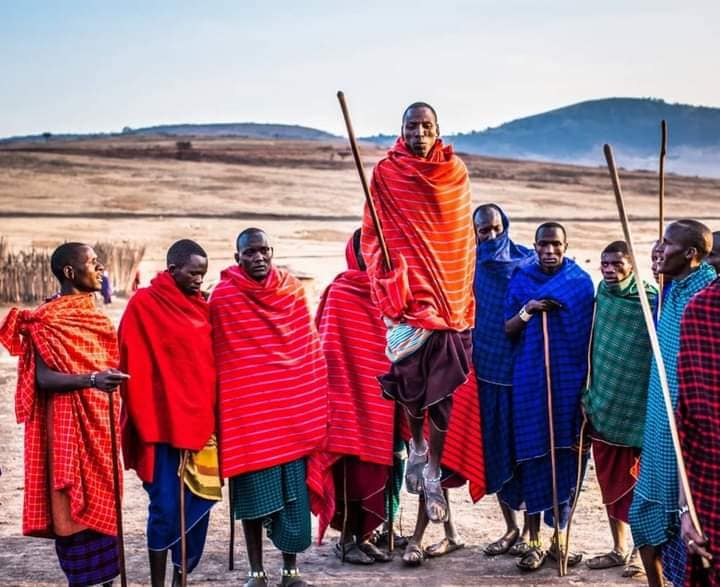
Why are the Maasai unique?
The unique thing about Maasai people is their continued traditional way of life in modern times. During a time when European sovereignties were occupying and colonizing much of Africa, the Maasai resisted their domination and influence. They preserved many of their cultural traditions despite colonial rule. Other aspect that makes them unique are vibrant clothing, intricate hairstyles, elaborate jewelry and face painting. Their way of life, the cattle they keep, and their dancing ability also makes them popular around the world. You can give it to them in this aspect.
Maasai Traditions
The Maasai have a very patriarchal society. Masai men and elders make all of the important decisions for Masai tribes. They measure a man’s wealth in terms of the number of children a man has and heads of cattle. The more the better. The Maasai have a very colourful culture of music and dance. The women are known to recite lullabies, hum and sing songs of praise about their sons. There’s always one song leader, known as an “Olaranyani”, who leads the group in song.
Another thing about Maasai people, both women and men mostly shave their head to celebrate rites of passage such as circumcision and marriage. This represents the fresh start that will be made as one pass from one stage of life to another of life’s chapters. It’s only the Maasai warriors who are allowed to wear long hair, which they weave in thinly braided strands.
Also Read: Zulu Tribe History
The Maasai children are named upon reaching 3 “moons” after given birth and their heads are shaved clean apart from a tuft of hair, which resembles a cockade, from the nape of the neck to the forehead. Before circumcision, the young boys will be shaved two days before they are circumcised. The young warriors then allow their hair to grow, and spend a great deal of time styling the hair.
The Maasai traditionally hold “coming of age” ceremonies during which the horn of the “Greater Kudu” is used to summon all of those coming of age to assemble for the initiation ceremony. Such ceremonies last for ten (10) days or more and involve quite a bit of singing, dancing and flirting. During the ceremony young men will line up and chant towards a line of singing women standing across from them. A very unique and interesting sight to see. Some parts of Maasai tradition have changed in recent years. Until recently, the single-handed slaying of a lion with a spear was a requirement for all boys who wanted to become Masai warriors. To prevent the extinction of the lions.
Color
They wear red and blue color as it is known to be sacred and holy in the Maasai culture. These colors have their significant as stated: Red – stands for bravery, unity, and blood, while blue represents energy and the sky. A Maasai bride in her traditional bridal attire. The bride usually wears red or orange colored dress on her wedding day.
Religion
Before now, Maasai people are monotheistic, and their God is named Engai or Enkai, a God who is mostly benevolent and who manifests himself in the form of different colors, according to the feelings he is experiencing. Enkai is not represented by any human-like shape. Instead, he is represented by colors. And the said colors have their precise meanings such as: Black and dark blue mean God is well-disposed towards men while red, on the other hand, is identified with God’s irritation.
First, The Enkai has two manifestations: Enkai-Narok, the Black God, good and beloved, brings grass and prosperity for them. He is found in thunder and rain.
Secondly, Enkai-na-Nyokie, the Red God, he is vengeful, brings famine and hunger. He is found in lightning and is identified with the dry season.
The Maasai religion, which is called “Laibon” (Laiboni) intercedes between the world of the living and the Creator. These are the Maasai’s high priests and diviners. In addition to organizing and presiding over religious ceremonies in Maasai—including sacrifice and libation, they also heal the living, physically and spiritually. That’s before then, now those things are beginning to fade away among the Maasai.
The importance of cattle to the Maasai can be traced back to their religion and to Enkai. Today, most of the Maasai people are Christians and celebrate Christian holidays with very few of them Muslims but some still practice the traditionist.
Festival
Though Maasai people don’t have a fixed date for a festival in their calendar. They have several festivals to celebrate, dance and feast, like marriage, circumcision, etc. As the awareness keep coming, they have begun to celebrate a Global Festival which was first held from 7th – 9th November, 2013. This is not the fixed dates though. You can see they also celebrated the festival in August, 2024. The Maasai Cultural Festival is a celebration of the Maasai culture, a vibrant East African heritage primarily in Kenya and Tanzania. It’s a time for Maasai communities and visitors to immerse themselves in traditional Maasai life, including dances, music, storytelling, crafts, and food. The festival aims to showcase the unique traditions, customs, and lifestyle of the Maasai people.
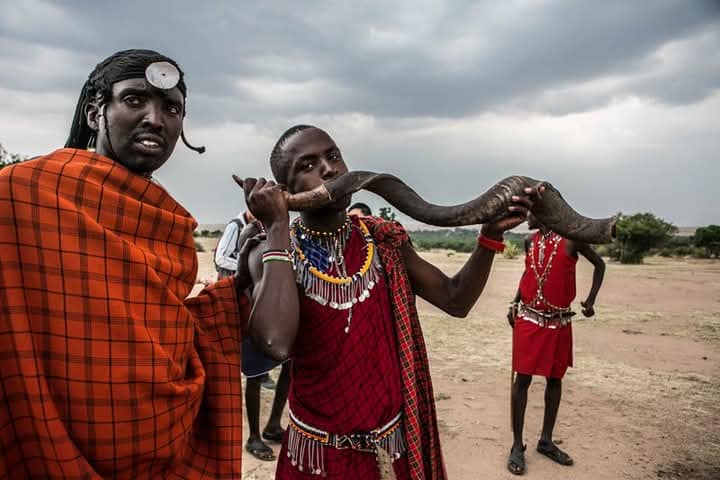
Marriage
Marriage involves a substantial bride-price in livestock. The traditional Maasai practice polygamy, although this is slowly changing due to the influence of modern values. Maasai used to practice woman circumcision then and girls are circumcised between the ages of 11 and 13 old. But now, there are campaign to stop women circumcision due to the grave danger it created to womanhood.
You Can Also Read: Jukun Wapan and Traditional Food
Below are steps taken:
1. Courtship and Arrangement
- Arranged Marriages: Most marriages are arranged by elders. A young man may not propose directly but relies on his family to initiate discussions for him.
- Parental Role: Fathers choose brides for their sons, sometimes years in advance when they are still young.
- Age and Readiness: Boys usually marry after initiation into warriorhood (Morani); girls may marry soon after female initiation (Emuratare) too.
2. Bride Price (Dowry) which is compulsory in most of the tribe along the globe.
- Known as “bride wealth”, in Maasai, dowry is usually paid in cattle, a sign of wealth and honor.
- The number of cows varies by family status but is often 10–20 cows.
- Cattle solidify family bonds and are seen as compensation to the bride’s family for taking their daughter.
3. The Wedding Ceremony though some are concluding the wedding ceremony in the church but here are what make the day a colorful one.
- Traditional Attire: The bride wears elaborate beadwork, red shuka cloth, and may shave her head also.
- Blessings: Elders bless the union, sometimes with milk or cattle dung, symbolizing fertility and prosperity. This is one of the most awaited moments.
- Dance and Song: Ceremonial dances and chants mark the occasion, reinforcing community unity.
- Transition Rituals: The bride is often escorted to her husband’s village, symbolizing her new status.
4. Roles and Responsibilities. Maasai share different responsibility in the family as:
- Maasai women are expected to care for children, cook, and build the enkang (house).
- Men handle herding, protection, and tribal decision-making.
- Polygamy is accepted, especially for wealthy men with many cattle.
Cultural Significance
The cultural significant of marriage in the Maasai tribe is listed below:
- A symbol of social status
- A bridge between clans and lineages
- A way to preserve cultural identity and continuity
- A deeply communal experience involving entire families and neighbors
Challenges and Modern Shifts
Though modernization has influenced many aspects of marriage in Maasai, while many traditions remain, some aspects are changing due to modernization:
- Legal and human rights issues, especially regarding early or arranged marriages
- Education and urbanization affecting young Maasai choices
- Modern weddings incorporating church blessings and civil registration
Despite these shifts, Maasai marriages still uphold rich cultural expressions of loyalty, family, and heritage which has been for so many years and still counting.


